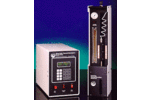- Site Preparation
- Installation of the SPTD on
- Varian 3400
- HP 5890 and Other GCs
Careful adherence to these installation instructions should allow the user to install the SPTD system on the HP 5890 and other gas chromatographs. Be certain that you read through the instructions completely and acquire all the tools required before proceeding. The section on site preparation found in this manual should also be read through completely to be sure that you are ready for installation.
For further help in installation call
S.I.S. customer support at
contact us.
The entire S.P.T.D. system can be installed by the end user. However, Scientific Instrument Services also provides installation by S.I.S. qualified staff. This includes installation of the Short Path Thermal Desorption on your GC or GC/MS system and training to get you up and running with your new system. Price includes all travel and lodging and expenses for 1.5 days at your location. Please call S.I.S. for more details.
| Part No. | Description | Quantity In Stock |
Price EA |
Order |
|---|---|---|---|---|
| 782100 | On Site training and installation of TD-5 System, Includes 1 1/2 days on site, travel and all other expenses. (Continental US, except NJ & Eastern PA) | DISCONTINUED | --- | --- |
| * Call for availability. | ||||
|
|
||||
Installation of the S.P.T.D. System on the Hewlett-Packard 5890 Gas Chromatographs
Unpacking
1. The following items should have been received with your shipment, and are required for installation of the Short Path Thermal Desorption (S.P.T.D.) System on the Hewlett-Packard 5890. Be sure you have all the items before proceeding. If any items were not received with your system call us immediately. See Figure 3.23 and the parts list included with your installation kit to aid in determining that all items were received. Save all packaging material and boxes if future service is required.
Fig. 3.23 The Short Path Thermal Desorption System for the HP 5890 gas chromatographs.
Part # Description Qty. 782000D S.P.T.D. Unit 1 782000C S.P.T.D. Controller 1 782000M S.P.T.D. Model TD2 Manual 1 782000N S.P.T.D. Application Notes 1 782010 Interconnect Cable, 6 Ft. 1 H.P. Installation Kits 782210 HP5890 Series I Installation Kit 1 782220 HP5890 Series II - no EPC Installatin Kit 782230 HP5890 Series II with EPC 1 2. The following tools are required for installation of the system. a. Tubing cutter for cutting 1/16 inch S.S. carrier gas line. b. 7/16 inch wrench to tighten 1/8 inch Swagelok fittings. c. 5/16 inch wrench to tighten 1/16 inch Swagelok fittings. d. Snoop leak detection fluid. e. Scissors to cut PTFE tubing.
NOTE: The S.P.T.D. must be utilized on the front injection port of the GC if more than one injection port is present.
If injection port is installed on rear position it will need to be moved to the front position.
CAUTION: Be sure all power to the gas chromatograph is off and the GC is unplugged before proceeding.
3. Remove the injection port cover plate and the right top cover plate of the gas chromatograph as shown in Figure 3.24 to gain access to the injection port.

Fig. 3.24 The HP 5890 gas chromatograph with the covers removed.
GC Carrier Gas Solenoid Valve Installation
NOTE: Installation of the GC Carrier Gas Solenoid (781999-24) is optional but is recommended. Please see GC Carrier Flow on page 7-1 of this manual for a discussion on the use of this valve. If you have EPC on your GC please see page 3-22 of this manual. If you decide to not install this solenoid valve proceed to step 10.
4. There are two 1/16 inch stainless steel gas lines which enter the front of the injection port, one is for the septum purge and the other is for the carrier gas. See Figure 3.25. Determine which line is for the carrier gas by tracing the line back from the injection port. The carrier gas line will pass through an internal gas filter on the inside back cover of the GC and eventually terminate at the back of the GC where the carrier gas line enters the GC from its source. Be sure that you have correctly determined which line is the carrier gas line.

Fig. 3.25 Close-up of the injection port of the HP 5890, showing septum purge and carrier gas lines.
5. Turn off the carrier gas flow at its source.
6. Using the tubing cutter, cut the carrier gas line approximately 1-2 inches from the injection port. See Figure 3.26. Be sure that both ends of the carrier gas line where you have made the cut are open and clean, if not clean with a small needle file. See Figure 3.27.
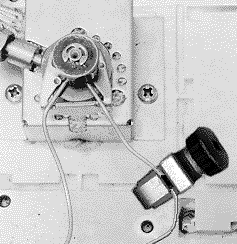
Fig. 3.26 Cutting the GC carrier gas line.

Fig. 3.27 Be sure that both ends of the carrier gas line are open and clean where the line was cut.
7. Determine the flow direction of the GC carrier gas solenoid valve (781999-24). There is an arrow on the side of the valve which notes the flow direction of the valve. Install the valve where you have just made the cut in the carrier gas line such that the outlet of the valve is towards the injection port of the GC. Install the valve in such a position that the valve will not interfere with the covers of the GC when they are replaced later. See Figure 3.28. Be sure the 1/16 inch SS line is completely seated in the Swagelok fittings on the solenoid valve. See Figure 3.29. Tighten the fittings finger tight and then tighten 3/4 turn further with the 5/16 inch wrench. See Figure 3.30.
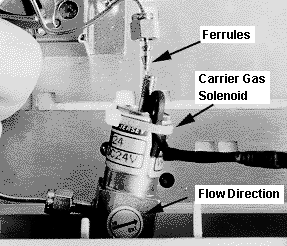
Fig. 3.28 Installing the GC carrier gas solenoid valve. Notice the back ferrule and front ferrule used in the Swagelok fittings. Be sure these are properly installed.

Fig. 3.29 The solenoid valve must be installed in such a manner that it does not interfere with the GC injection port cover.

Fig. 3.30 Tighten the Swagelok fittings 3/4 turns past finger tight with a 5/16" wrench.
8. Turn on the carrier gas flow again and check for leaks in these connections using Snoop. See Figure 3.31. If leaks occur re-tighten the fittings and leak check again.
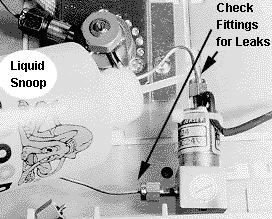
Fig. 3.31 Using SNOOP to leak check fittings on the GC carrier gas solenoid valve.
9. Feed the GC carrier gas solenoid valve electrical lead from the injection port to the rear of the GC. Keep the lead away from any hot surfaces. This line must exit through an opening in the back panel of the GC so that it can be plugged into the S.P.T.D. controller later. See Figure 3.32
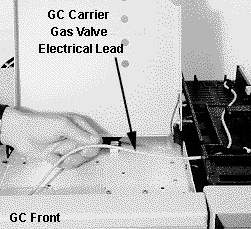
Fig. 3.32 Feed the electrical lead from the solenoid valve through the rear of the GC.
NOTE: For GC's with EPC a second valve must be installed in the split vent line. See page 3-22 for details.
Installation of GC Remote Cable
10. With the covers still removed locate the plug for the remote cable installation on the GC control board. See Figures 3.33 and 3.24.

Fig. 3.33 The GC remote start plug location.
11. Plug the appropriate end of the remote cable (782012) onto the plug on the GC control board. See Figure 3.34. Feed the cable out to the rear of the GC so that it can be later plugged into the rear of the S.P.T.D. controller.
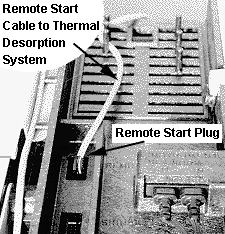
Fig. 3.34 Plug the remote cable (782012) into the GC remote start plug. The cable is keyed so that it fits in only one direction.
NOTE: If you have a MSD attached to your GC you will need to use the HP Parallel/Remote PCA (HP# 05990-60320) and the HP Parallel/Remote Cable (HP#05990-60019) which you should have received with your GC/MS. The parallel/remote cable plugs into the plug on the GC labeled Remote, the parallel/remote PCA plugs into the parallel/remote cable allowing hookup of the HP remote cable (HP# 35900-60700) to the MSD and hookup of the desorption remote cable (SIS# 782012) to the desorption system. See Figure 3.35. Plug the appropriate end of the desorption remote cable (782012) into the parallel/remote PCA and then feed the other end of the desorption cable out the back of the GC so that it can be later plugged into the rear of the S.P.T.D. controller.

Fig. 3.35 Installation of the remote cable (782012) if an autosampler or MSD is present.
12. Replace the GC cover which is located over the GC remote input. Do not replace the cover over the injection port.
Installation of S.P.T.D. Unit
13. Place the mounting plate (781121 or 781123) where the original HP injection port cover would be. The standoffs should support the mounting plate at the correct height. The standoffs on the mounting plate must sit firmly on the injection port mounting surface. If any gas lines are in the way gently move them to provide clearance for the mounting plate standoffs. See Figures 3.36 and 3.37.

Fig. 3.36 Installation of the desorption unit mounting plate.

Fig. 3.37 The mounting plate should sit firmly and be level, with the septum nut centered in the opening in the mounting plate.
14. Place the aluminum injection port adaptor (781106) over the front injection port. The bottom of the adaptor will protrude through the hole in the mounting plate, while the remainder will rest evenly on the mounting plate. See Figures 3.38 and 3.39.
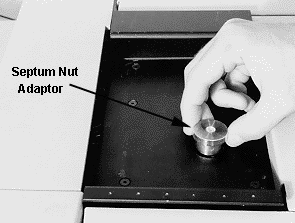
Fig. 3.38 Installing the septum nut adaptor. (781106)

Fig. 3.39 The septum nut adaptor should sit firmly and evenly on the mounting plate.
15. The S.P.T.D. unit is manufactured with a counterbore in the bottom of the unit which fits snugly over the GC injection port adaptor just installed. See Figure 3.40. Place the unit over the injection port adaptor so that the adaptor is fitted in this counterbore. See Figures 3.41 and 3.42. There are no clamps or other fittings required to mount the system to the GC.

Fig. 3.40 Schematic showing counterbore for septum nut adaptor.

Fig. 3.41 Align the SPTD unit over the septum nut adaptor.

Fig. 3.42 The SPTD unit installed on the HP 5890.
16. The back of the S.P.T.D. unit has two 1/8 inch female Swagelok fittings for connection of the carrier gas and the air which is used to operate the S.P.T.D. system. They are labeled GAS for the carrier gas and AIR for the compressed air. See Figure 3.43.

Fig. 3.43 Schematic shoeing the location of the gas inlets on the rear of the SPTD unit.
NOTE: For more discussion on the gas line setup and installation see the Site Preparation section of this manual.
17. Using the 1/8 inch Nylon tubing supplied with the S.P.T.D. system cut a length of tubing with the scissors long enough to reach from the tee which was installed in the GC carrier gas line during site preparation to the fitting labeled GAS. Be sure the tubing is fully seated in the fittings and then tighten the fittings finger tight. Using the 7/16 inch wrench tighten the fittings 3/4 turns further.
WARNING: Do not use Hydrogen as a carrier gas in this system.
18. As before, cut an appropriate length of the 1/8 inch PTFE tubing supplied with the S.P.T.D. to connect from the compressed air source to the fitting labeled AIR. Be sure the tubing is fully seated in the fittings and then tighten the fittings finger tight. Using the 7/16 inch wrench tighten the fittings 3/4 turns further. See Figure 3.44.

Fig. 3.44 1/8" PTFE tubing is used for the carrier gas line and the compressed air line on the SPTD unit.
19. Using Snoop check for leaks at these connections.
20. Plug the interconnect cable (782010) into the appropriate plug on the back of the desorption unit. The cable is reversible so either end can be plugged into the unit. See Figure 3.45.

Fig. 3.45 Installation of the interconnect cable (782010).
Installation of the S.P.T.D. Controller
21. The S.P.T.D. controller can be positioned next to the unit as shown in Figure 3.46 or can be positioned on the bench next to the GC. Figure 3.47 shows the back of the controller.

Fig. 3.47 Rear view of the SPTD controller.
22. Plug the interconnect cable (782010) into the appropriate connection on the back of the controller. See Figure 3.48.

Fig. 3.48 Installing the interconnect cable (782010)
23. The cable from the GC carrier gas solenoid valve (781999-24), if it was installed earlier, should be plugged into the fitting labeled "GC Valve" on the back of the SPTD controller. See Figure 3.49.

Fig. 3.49 Plug the remote start cable into the plug labeled "Remote 1" on the rear of the SPTD controller.
24. The remote cable (782012) should be plugged into the fitting labeled "Remote 1" on the back of the SPTD controller. See Figure 3.49.
NOTE: The plug labeled "Remote 2" is available for starting recorders, integrators or other equipment.
An extra cable (782013) is included if the user wishes to use this option.
NOTE: The fitting labeled Cryotrap is available if the user wishes to use the GC Cryo Trap accessory.
25. Plug in the power cord from the back of the SPTD controller into a grounded 115V, 10 Amp outlet.
26. Return power to the gas chromatograph.
27. If you purchased a GC Cryo-Trap for use with the SPTD please refer to the CryoTrap Manual for installation information or to Section IX (Accessories) in this manual.
Refer to the "Setup" and "Standard Operating Procedures" sections of this manual for further instructions and operating procedures.
Installation of the Short Path Thermal Desorption System on the H.P. 5890 Series II GC with Electronic Pressure Control Injection Port
When the Short Path Thermal Desorption System is installed on the Hewlett Packard 5890 Series II GC's with the Electronic Pressure Control Injection Port accessory the installation must be modified from the procedure described in the Short Path Thermal Desorption System manual. *When the electronic pressure control injection port is used, a two gas valve assembly must be installed into the GC injection port carrier gas lines. This valve assembly is included in the HP5890 Series II with EPC Installation Kit (part # 782230) or can be ordered separately (part #781999 - EPC, price $490.00. This assembly consists of two 24 volt normally open valves wired in parallel. A single cable from the valves plugs into the back of the desorption system controller, the same as the valve system described in the manual. One of these valves (with the two 1/16" Swagelok fittings) is spliced into the GC carrier gas line right before the injection port as described in the desorption manual for the HP injection port. The second valve is installed in the split vent line. To install this valve simply, remove the 1/8" Swagelok nut from the split vent at the injection port and install this second valve in between the two connections.
Both of these valves are normally open valves, which means that in all normal operations GC flow is permitted to pass through these lines. Only when they are activated by the Short Path Thermal Desorption System during the injection and desorption steps of the automatic mode of operation are the valves closed. The purpose of these valves is to permit only carrier gas which has passed thorough the sample in the desorption tube to enter the injection port. The second valve installed is required to permit the system to operate in both the split and splitless modes with the electronic pressure control injection port.
The GC can be operated in both the split mode and the splitless mode. To operate the splitless mode, the purge valve on the GC should be set to the ON position. In this mode the only paths for carrier gas are through the GC column and out the septum purge. No flow is permitted out of the split vent. Keep in mind, however, that 3.0 mL/min does escape out the septum purge which does act like a split. To operate the system in the split mode, the purge valve should be set to the OFF position. In this mode, carrier gas passes through the column, out the septum purge and also out the split vent. This purge valve ON or OFF is set via the GC keypad or via the Chem Station software for the GC operation.
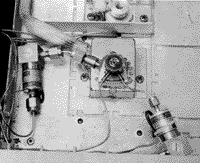
Fig. 3.50 Two gas valve assembly. On the right is the valve for the GC carrier gas line and on the left, the second valve is installed in the split vent line.
*Please order installation kit #782230 which includes all items necessary for installation of the SPTD on an HP GC with EPC
Installation on other top loading GCs
The S.P.T.D. system can be installed on most top loading gas chromatographs. For example the system has been installed on the Varian 3700 and the Perkin-Elmer AutoSystem GC. Please call our customer support personnel for help in installing the desorption system on these gas chromatographs.
The S.P.T.D. system is manufactured to provide a variety of options for mounting and installation. The bottom plate of the Desorption Unit has 6 drilled and tapped holes into which spacers or standoffs can be attached to provide legs for the desorption unit if required (Figure 3.51). These tapped holes enable the user to adapt the thermal desorption unit to most models of GCs. By attaching #10-32 machine bolts with washers, spacers, standoffs or other suitable spacers, the height of the Desorption Unit from the top of the GC injection port can be adjusted. These drilled and tapped holes would also permit the user to permanently attach the Desorption Unit to the GC cover if so desired. However this is not normally necessary, and is not recommended. Gravity firmly holds the Desorption Unit in place. It will not rise even when injection through hard 3-layer type septa.
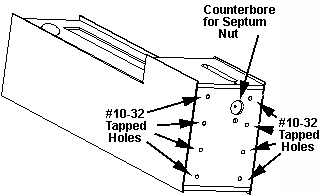
Fig 3.51 Tapped holes on bottom of S.P.T.D unit aid in installation.
In addition custom septum nuts, adaptor fittings, and spacers can be custom manufactured by S.I.S. to adapt the various models of GCs to the desorption system. Custom mounting plates can be designed and fabricated to fit a particular instrument. Please call SIS customer support personnel for further information.




